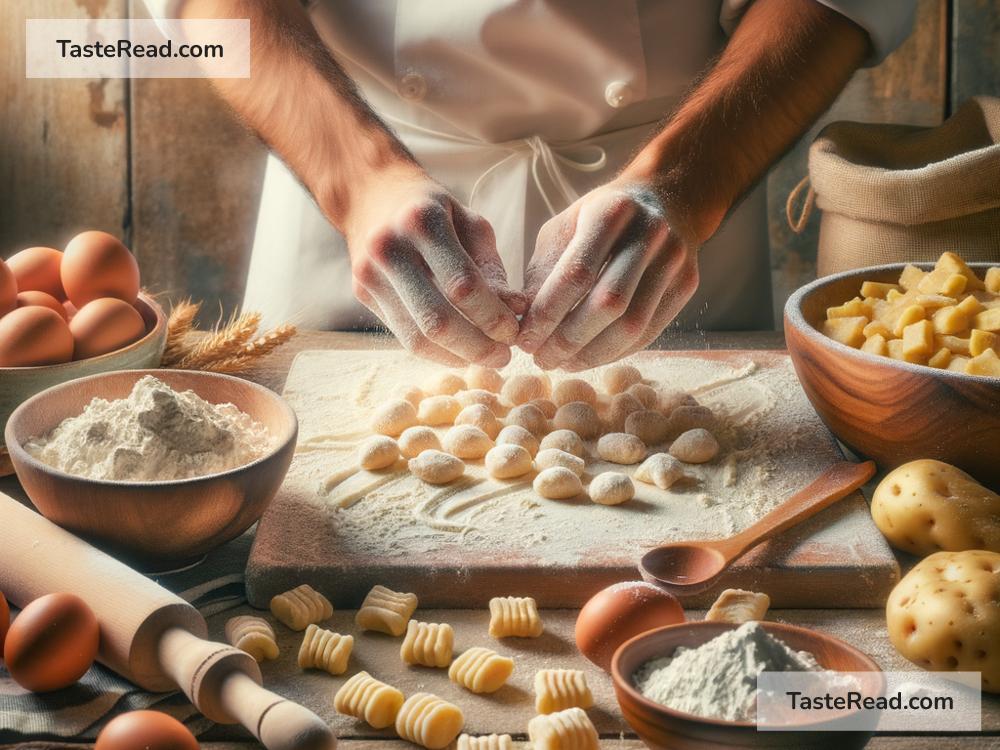Exploring the Roots of the Italian Gnocchi: A Journey through Time
Italy, a land of vibrant traditions and flavorsome cuisine, has gifted the world with a variety of culinary delights. Among these, gnocchi stands out as a fascinating dish that blends simplicity with a rich history. But where did gnocchi come from? How did this humble dish earn its place in the hearts of food lovers around the globe? Let’s embark on a journey exploring the roots of the Italian gnocchi.
The Origin: A Blend of History and Legend
Gnocchi, pronounced ‘nyok-kee’, is a type of dumpling that has been a staple in Italian kitchens for centuries. Its name is believed to come from the Italian word ‘nocchio’, meaning a knot in wood, or from ‘nocca’, meaning knuckle, possibly referring to their small, rounded shape. However, the origins of gnocchi go much further back than the country of Italy itself.
It is thought that the concept of gnocchi dates back to the Roman Empire. The Roman soldiers and legionaries, known for their long marches across the continent, needed food that was both nutritious and easy to carry. They would mix a porridge-like base of flour and water, possibly adding in some eggs for binding, and cook this mixture to create an early form of gnocchi.
As the Roman Empire expanded, the concept of gnocchi spread across the regions, evolving with the local ingredients and culinary traditions. It wasn’t until the introduction of the potato from the New World in the 16th century, however, that gnocchi began to take on the form we recognize today.
The Evolution: From Flour to Potato
Before the arrival of the potato, gnocchi were made from a mixture of flour and water, sometimes incorporating eggs or ricotta for a richer taste and texture. In some regions, breadcrumbs or semolina were used as the base. Each variation reflected the local cuisine and available ingredients, showcasing the diversity of Italian culinary traditions.
The introduction of the potato transformed gnocchi-making. Potatoes provided a more flavorful and satisfying base, which, when boiled and mashed, mixed with flour, created a dough that could be easily shaped and had a delightful, soft texture when cooked. This innovation quickly spread across Italy, and potato gnocchi became the standard.
Today, gnocchi are primarily made from potatoes, flour, and eggs, though variations still exist, embodying the rich tapestry of Italy’s regional cuisines. For instance, in Lombardy, you might find gnocchi made with pumpkin, while in Rome, semolina gnocchi reigns supreme.
The Cultural Significance: More than Just Food
In Italy, food is more than sustenance; it’s a means of connection, a reflection of history, and a celebration of life. Gnocchi, like many Italian dishes, carries stories of family gatherings, regional pride, and culinary craftsmanship. It embodies the Italian ethos of using simple, quality ingredients to create food that nourishes both the body and the soul.
One unique tradition centered around gnocchi is the “Gnocchi del 29,” a custom originating from Argentina and Uruguay, where families and friends gather on the 29th of each month to enjoy a meal of gnocchi together. This tradition is said to bring luck and prosperity, as diners place money under their plates to attract wealth.
Making Gnocchi: A Craft of Love and Patience
Making gnocchi is both an art and a labor of love. It involves boiling the potatoes until they are just right, mashing them to a fine consistency, and then carefully integrating flour and eggs to form a dough. The dough is then rolled into long ropes, cut into small pieces, and given their signature ridges, traditionally by rolling them off a fork or a special wooden gnocchi board. This texture is not just for aesthetics; it helps the gnocchi hold onto sauces better, enhancing the eating experience.
Despite the simplicity of the ingredients, mastering gnocchi-making takes practice. The key lies in achieving the right dough consistency – too soft, and the gnocchi will fall apart when cooked; too hard, and they’ll turn out dense and chewy. When done right, however, the result is a delectable, pillowy dumpling that embodies the warmth and richness of Italian cuisine.
In Conclusion
From Roman legions to modern-day kitchens, the journey of gnocchi is a testament to the timeless appeal of Italian cuisine. This humble dumpling, with its soft texture and rich history, has traversed centuries and continents to become a beloved dish worldwide. In exploring the roots of the Italian gnocchi, we find not just a recipe, but a story of cultural evolution, tradition, and the simple joys of cooking and eating together. Gnocchi is indeed a celebration of Italian heritage, inviting us all to savor the taste of history with each bite.


